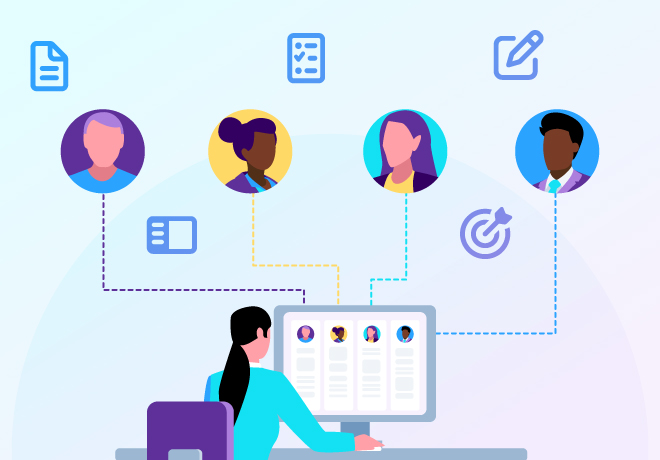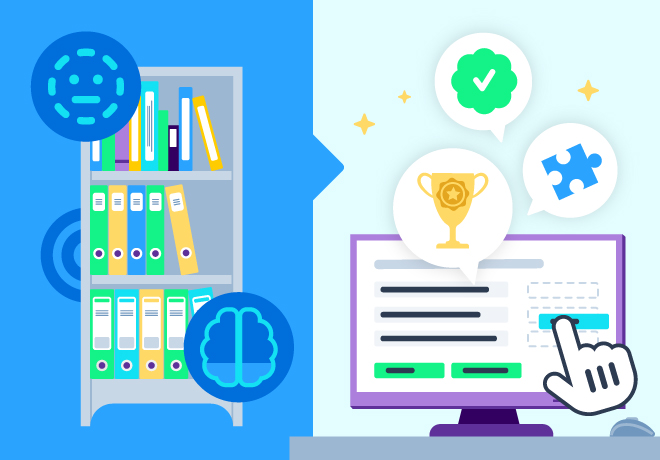
What is social learning and how to leverage it

Related articles
Get valuable eLearning insights to your inbox.
Listen to Neovation’s Demystifying eLearning podcast generated with NotebookLM!
Listen to our podcast on your favorite platform!
Humans are social by nature. Social media platforms capitalize on our drive to connect and our equally natural thirst for information. Social learning is simply a way for employers to do the same.
Social learning elements are part of any learning program: Face-to-face learning sessions often feature breaks where learners … socialize. Even where no formal opportunities are created, learners find ways to talk about and share what they’ve learned and ask questions of their peers.
In an eLearning context, social learning refers to both formal and informal channels for collaboration, sharing and communal learning, both within an organization and among professional peers outside the company.
Social learning is organic

Managers can — and should — provide opportunities for social learning and support it. But social learning must develop organically; managers cannot create it or force it to happen.
Organizations that value a pro-learning culture offer tools and platforms where employees can share their knowledge, help colleagues solve problems and build community. These companies can provide space where employees can post and share resources, for example, or they can provide tools like Slack or Yammer and encourage employees to participate.
Corporate culture influences social learning. Providing the space is an important signal to employees, but people must also feel safe asking questions and know that they’ll get the information they need — not be ridiculed for asking.
Managers and executives must also support this use of employee time, not send a message that time spent on social learning, through your online training platform or networking platforms is “wasted” time or that those employees are slackers. They can do this by sharing important information with employees via social platforms, encouraging their direct reports to share their accomplishments and knowledge via these channels, and by making social and collaborative learning a priority.
It’s not about control
In their enthusiasm for social learning, many managers want to track or measure it; they might seek to control access to platforms somehow. This is likely to doom those platforms to failure.
Monitoring employees’ presence on social learning platforms is going to inhibit their participation. They’ll still learn socially; they just won’t use the platforms and spaces their workplaces provide.
To build participation and promote lively, inclusive discussions, managers need to provide the tools and then get out of the way.
When employees are collaborating, sharing their workarounds and solutions, and engaging with one another voluntarily, that learning will impact their work. Smart managers don’t try to measure social learning; instead, they measure results.

An experienced writer, editor, tech writer, and blogger, Pam helps you make sense of learning science and eLearning technology. She provides information you can use to drive improvements in your training effectiveness and ROI.
Become part of our L&D community
We publish a new learning hub article — full of useful, practical topics — weekly.
Not sure where where you want to start? Jump into one of our recently published articles and see where it takes you!








-svg.svg)
-svg.svg)
-svg.svg)
-svg.svg)